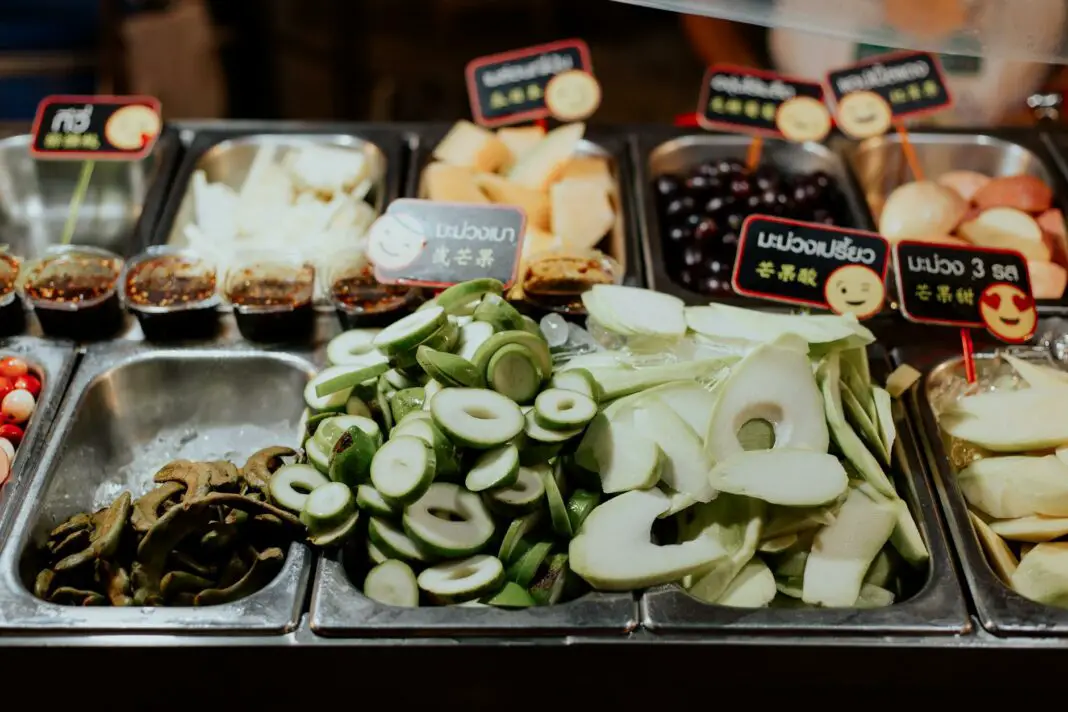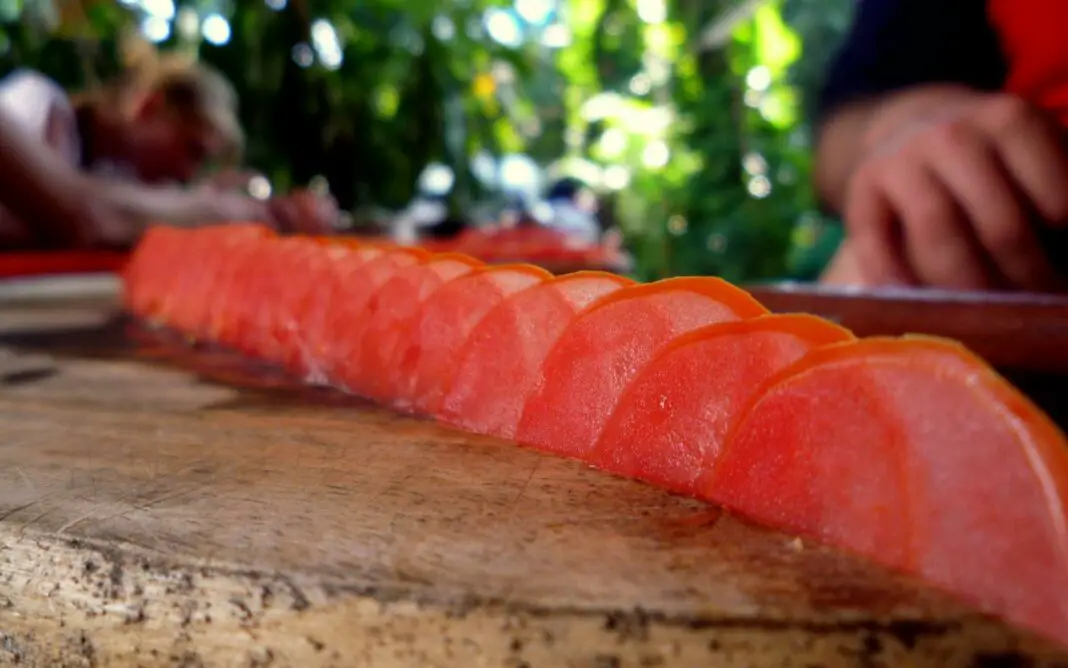Unveiling the Secret Ingredients of Thai Cuisine
Embarking on a trip to Thailand offers not just a feast for the eyes but a delightful adventure for the taste buds as well. This vibrant country, known worldwide for its culinary diversity, hides in its bustling markets and humble eateries a trove of secret local ingredients that elevate Thai dishes from ordinary to extraordinary. Imagine savoring the perfect balance of flavors in a bowl of tom yum or experiencing the exquisite aroma of a freshly prepared green curry. What is the magic behind these irresistible dishes? Join us as we explore the myriad of local ingredients that make Thai cuisine the gastronomic treasure it is.
Understanding the culture of Thai food reveals its complexity, a beautiful blend of techniques, flavors, and values related to community and tradition. It’s not just about what you eat but how it’s made and the stories it tells. Let’s dive into the essence of Thai cooking, discovering the indispensable ingredients and their roles in crafting mouthwatering meals that visitors cherish and locals adore.
Table of Contents
- Key Ingredients that Define Thai Dishes
- Essential Herbs and Spices: The Heart of Thai Cuisine
- Signature Sauces and Pastes: Layers of Flavor
- Fresh Produce: The Foundation of Flavor
- Unique Cooking Techniques: Elevating Every Meal
- A Culinary Journey Worth Taking
Key Ingredients that Define Thai Dishes
Every Thai dish stands proudly on the strength of its ingredients, which often travel from local farms to bustling street stalls, creating a sustainable cycle that nourishes both community and culture. Essential ingredients such as jasmine rice, coconut milk, and fish sauce form the backbone of numerous dishes, but the magic truly lies in how they are used in combination. For instance, jasmine rice is more than just a side; it complements the spicy tones of pad krapow, absorbing every ounce of flavor. Coconut milk adds a luscious creaminess to soups and curries, while fish sauce introduces umami depth that enhances the flavor profile exponentially.
Now, consider lemongrass, galangal, and kaffir lime leaves, which bring stunning brightness and zest. These aromatic ingredients are what set Thai dishes apart, giving each recipe its unique fingerprint. The symphony of flavors created by balancing sweet, sour, salty, and spicy is no mere coincidence; it is an art form learned through generations. Understanding these key ingredients is essential for anyone looking to recreate authentic Thai dishes, allowing home cooks to appreciate the exceptional flavors that make Thai cuisine so captivating.
Essential Herbs and Spices: The Heart of Thai Cuisine
No discussion of Thai cuisine is complete without spotlighting the herbs and spices that form its core. Thai cooking embraces an array of fresh herbs, including cilantro, basil, and mint, each contributing its own unique flavor signature. Thai basil, known for its peppery kick and anise aroma, is essential in dishes like pad see ew and green curry, offering a much-needed contrast to the often fiery nature of Thai food. Similarly, using cilantro not only enhances flavor but also adds freshness, crucial for rounding out complex flavors.
Spices such as chili and white pepper build the heat component essential to many Thai dishes, with dried chilies and fresh ones often used interchangeably depending on the recipe’s requirements. The interplay of spicy and sweet can be found in dishes like som tam, where the heat from the chili is beautifully balanced by the sweetness of palm sugar. Thus, the right blend of herbs and spices does not merely elevate a dish; it turns every meal into an ensemble that speaks about the culture of Thailand, rich in flavors and nuances.
Signature Sauces and Pastes: Layers of Flavor
Thai cuisine is renowned for its complex sauces and pastes, which are often homemade, reflecting the heart and soul of every household. The famed som tam sauce, a mix of tamarind, fish sauce, lime juice, palm sugar, and chili, encapsulates the essence of Thai cooking with its balance and harmony. This sauce can take a simple papaya salad and transform it into a culinary masterpiece.
Similarly, curry pastes like red, yellow, and green variations are prepared with fresh ingredients, creating a highly aromatic base for numerous dishes. Each curry paste tells a story of its own, with green curry paste using vibrant green chilies and fresh herbs, while red curry paste boasts a richer, deeper flavor. The sauce and paste component is crucial as it dictates the aromas and penetrating flavors of the completed dish, turning each meal into a delightful experience that resonates with culinary traditions.
Fresh Produce: The Foundation of Flavor
In Thailand, the importance of fresh produce cannot be overstated. Traditional Thai kitchens often use vibrant, seasonal vegetables that not only provide nutrition but also showcase nature’s bounty. Fresh herbs, crunchy vegetables like eggplant, and zingy ingredients like lime zest add layers of flavor that are integral to Thai dishes. It’s common to stroll through local markets brimming with fresh ingredients, where the cook’s choice reflects not only the recipe but the freshest offerings of the day.
Consider dishes such as pad Thai, where the crispness of bean sprouts and the crunchiness of peanuts contribute to the overall texture and taste. The inclusion of seasonal fruits, such as mango in sticky rice, brings sweetness that perfectly contrasts savory flavors. Each of these ingredients adds to a dish’s depth and complexity while championing the philosophy of using what is available and in season, which is vital for authentic Thai cooking.
Unique Cooking Techniques: Elevating Every Meal
Thailand’s cooking techniques are remarkably diverse and are essential for ensuring the ingredients shine. Stir-frying in a wok at high heat, for instance, secures the freshness of ingredients while locking in flavor and texture. The rapid cooking process results in meals that are both vibrant and full of life. Similarly, steaming plays a role in preparing fish and vegetables, maintaining nutrients and showcasing the purity of flavors.
Fermentation is another critical technique utilized in Thailand, allowing for the creation of unique sauces and flavors over time. The famous nam pla or fish sauce is a prime example, embodying the essence of umami that enhances dishes. Through various cooking techniques, each meal becomes an experience – beneficial for taste but also intricate in tradition – as every cook applies personal styles while respecting their culinary roots.
Embark on a Culinary Adventure in Thailand
A culinary journey to Thailand is not merely a vacation; it is an experience that intertwines food, culture, and community, ultimately enriching the soul. Dishing out the hidden treasures of Thai cuisine transforms typical meals into an extraordinary celebration brimming with flavor and tradition. For those who have yet to explore the local eateries and street food stalls, you are missing out on the genuine essence of Thailand, where every meal tells a story.
Exploring Thai cuisine ultimately reveals the interconnectedness of its ingredients, techniques, and cultural narratives. Whether you’re an aspiring home chef or a passionate food lover, embracing the secrets behind these iconic dishes will enhance your culinary repertoires and reveal the joyous experiences hidden within each bite.
Frequently Asked Questions
What are the essential ingredients in Thai cooking?
Important ingredients include jasmine rice, fish sauce, coconut milk, and a variety of fresh herbs and spices, which form the backbone of many Thai dishes.
How does Thai cuisine balance flavors?
Thai cooking balances flavors by combining sweet, sour, salty, and spicy components. The careful selection of ingredients and their preparation is key to achieving this harmony.
What are the most famous Thai dishes?
Some of the most famous Thai dishes include pad Thai, green curry, tom yum soup, and som tam, each characterized by distinct flavors and cooking methods.
How can I recreate authentic Thai dishes at home?
To recreate Thai dishes at home, focus on sourcing the right ingredients, using fresh herbs and spices, and mastering traditional cooking techniques to capture the authentic flavors of Thailand.
Is Thai food always spicy?
While many Thai dishes do feature spice, there is a wide range of flavors that can accommodate varying palates. Many recipes can be adjusted to be more or less spicy based on personal preferences.
Image Credit: Pexels





